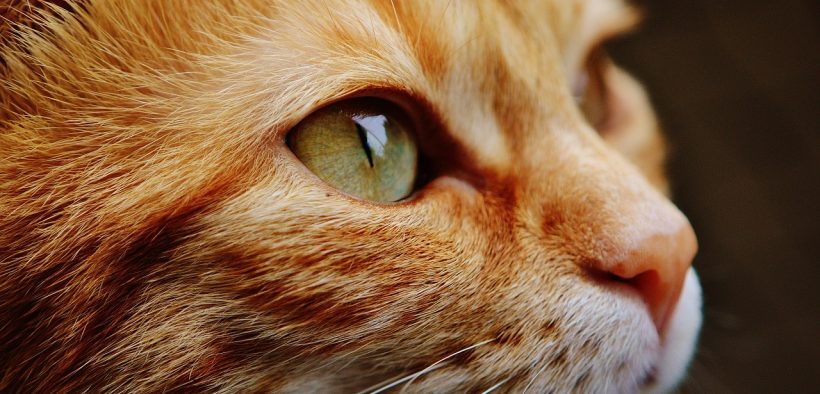First American Pets Diagnosed with COVID-19: Is There a Reason to Worry?

“We don’t want people to panic. We don’t want people to be afraid of pets. There’s no evidence that pets are playing a role in spreading this disease to people.”
Until this week, humans have been the main focus of the coronavirus pandemic, but there may be a reason to consider our furry friends. On Wednesday, two cats in New York State tested positive for COVID-19, making them the first US pets to be observed with the disease, James Gorman reported for the New York Times.
One-Way Street
The US Agriculture Department and Centers for Disease Control and Prevention announced the test, but stressed the disease is not believed to be transferred from feline-to-human.
“Public health officials are still learning about SARS-CoV-2, but there is no evidence that pets play a role in spreading the virus in the United States,” USDA said in a statement. “Therefore, there is no justification in taking measures against companion animals that may compromise their welfare.”
The cats were unrelated and from different regions of the state. In the first case, a veterinarian diagnosed the cat after it experienced symptoms of respiratory difficulties. Notably, no human household members were confirmed to have the disease, suggesting that they either were asymptomatic or the cat contracted the disease from somewhere beyond its home.
The second cat was also tested after exhibiting signs of respiratory trouble. The owner in its case did in fact test positive for COVID-19.
Although there is no evidence to suggest pets can transmit the disease, the CDC recommends interacting only with known pets and to keep pets indoors as much as possible. It also prescribes social distancing guidelines for dogs (six feet) and refraining from crowded dog parks.
In the event that a person believes or confirms they have COVID-19, the CDC recommends placing pets in the care of another household member and avoiding contact.
No Reason to Panic
The New York cats are not the first felines in the world to test positive; a pet cat in Belgium and eight big cats at the Bronx Zoo — five tigers and three lions — were all confirmed to have the disease. So far, all infected cats have remained in good health, the New York Times reported.
With less than a dozen infected felines across the world, health experts have downplayed the risk of pets infecting humans.
“If this was going to be a serious problem for cats, we would have seen greater numbers.” Either very few cats are being infected, or their symptoms are so mild that their owners don’t notice them or think they warrant a trip to the vet. The direction of infection “is not going to be cat to human,” said Dr. Karen Terio, the chief of the Zoological Pathology Program at the University of Illinois’ veterinary college. Her lab was responsible for testing the lab sample from the first Bronx Zoo case.
The CDC also emphasized reasons for optimism, USA Today reported.
“We don’t want people to panic. We don’t want people to be afraid of pets,” said Dr. Casey Barton Behravesh, a CDC official who works on human-animal health connections. “There’s no evidence that pets are playing a role in spreading this disease to people.”
Dogs Appear Less-Likely to Contract the Virus
Transmission of the disease from human-to-canines is even less likely according to current research on the subject. To date, two pet dogs in Hong Kong have tested positive. A 17-year-old Pomeranian was confirmed to have the disease and died two days after its quarantine ended. More recently, a German Shepherd tested positive on the Pok Fu Lam area of Hong Kong.
Although there are no signs of pets transmitting the disease to humans, the coronavirus is still in its emphasis. As a result, there remains a degree of uncertainty. Moreover, there are questions about how the disease will affect animals, TIME reported.
They might not exhibit the same warning signs or symptoms as a human with the virus, Terio said. “[T]here’s a lot that we don’t know about how different animals are going to respond to a viral infection.”
Diagnosing Pets from Home
The COVID-19 pandemic has already seen a rise in telemedicine for veterinarians, CNBC reported. Thanks to a US Food and Drug Administration policy change, veterinarians can examine animals — pets and livestock — remotely without an in-person visit first. Trends among states have also seen regulations relaxed at the state level to encourage more telemedicine for animals.
“We’ve seen a significant uptick in telemedicine,” said Dr. Aaron Smiley, president of the Indiana Veterinary Medical Association. “Veterinarians in Indiana and a lot of other states are essential businesses. We keep going to work, but our patients can largely stay home.”
Clinics are also practicing social distancing for animals they determine require clinical visits. Staff transport pets from the parking lot to limit exposure within the building.










I know some people from COVID-19 chat in Utopia p2p which also faced that problem. Their pets are infected. But it seems like it’s not dangerous for people. And animals deal with the virus much easier. Hope that’s true.